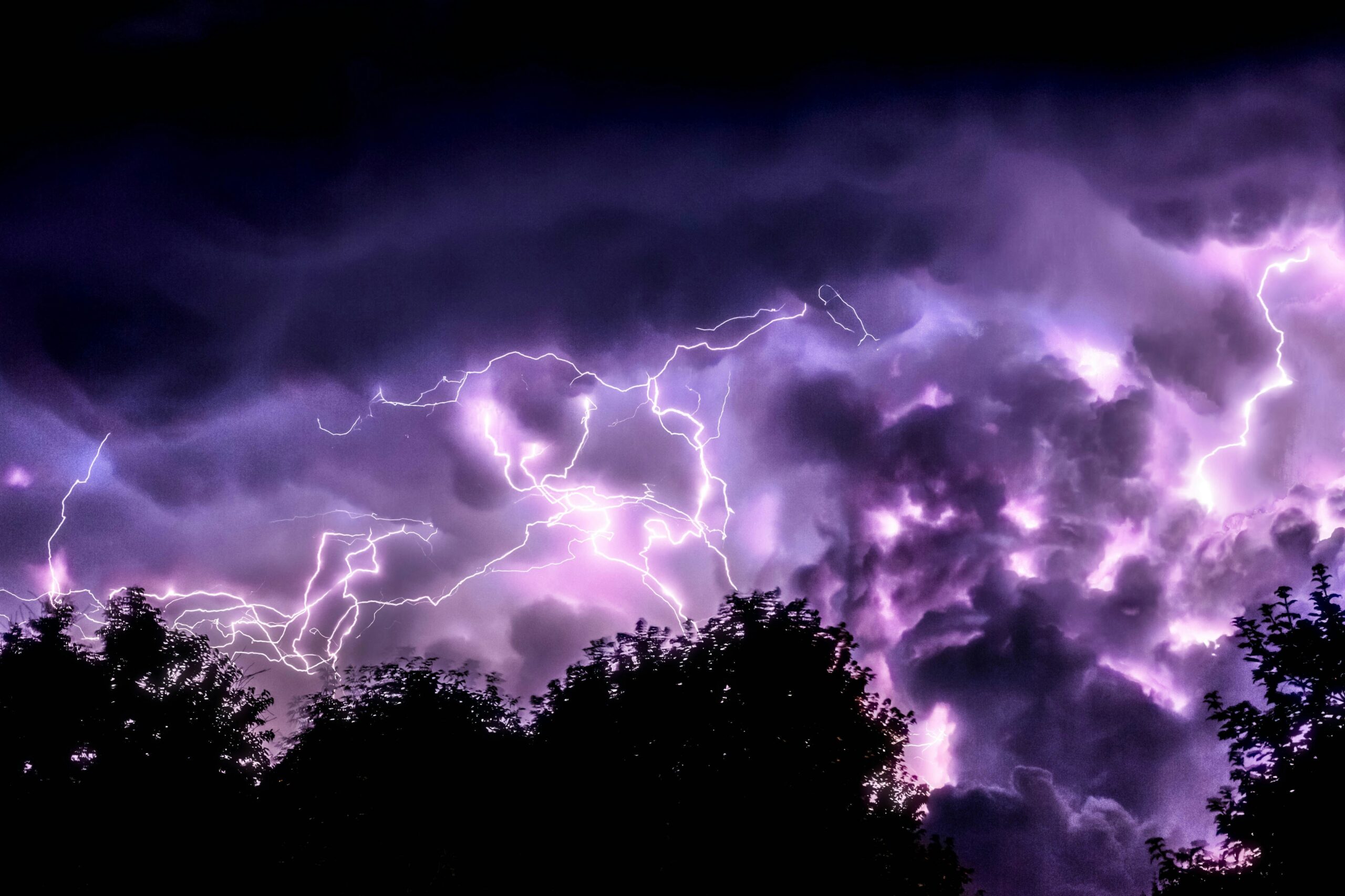Understanding Tornado Watches and Warnings
A tornado watch and a tornado warning serve distinct purposes and are critical components in severe weather communication. A tornado watch is issued by meteorological authorities when atmospheric conditions are favorable for the formation of tornadoes. This means that the ingredients for a tornado, such as warm, moist air colliding with cold, dry air, are present, creating a volatile environment conducive to tornadoes. It indicates a heightened state of alertness and encourages the public to stay informed about the weather conditions. During a tornado watch, it is essential to remain vigilant and prepared to take immediate action if weather conditions deteriorate.
In contrast, a tornado warning is a more urgent call to action. A tornado warning is issued when a tornado has been sighted by trained weather observers or detected by weather radar. This means that there is a confirmed threat, and the affected areas must take immediate protective measures. When a tornado warning is in effect, it is imperative to seek shelter in a safe location, such as a basement or an interior room on the lowest floor of a sturdy building, away from windows and exterior walls.
Both tornado watches and warnings are essential for public safety during severe weather events. Understanding the difference between the two can significantly impact one’s response and safety during such events. While a tornado watch suggests that individuals should stay alert and monitor weather updates, a tornado warning necessitates prompt action to protect life and property. Staying informed through reliable sources, such as the National Weather Service, local news, and weather apps, ensures that individuals can respond appropriately to these advisories and remain safe during severe weather conditions.
Current Weather Conditions in Providence County
As of today, Providence County is experiencing significant weather activity leading up to the issued tornado watch. Recent weather patterns have shown considerable instability in the atmosphere, characterized by fluctuating temperatures and increased humidity levels. Over the past few days, temperatures have oscillated between 75°F and 85°F, accompanied by a noticeable increase in moisture content, driving humidity levels upwards of 70%.
This atmospheric setup is fostering conditions highly conducive to tornado formation. A critical factor in this scenario is the presence of a cold front moving southeast across the region, colliding with the warm, moist air mass settled over Providence County. This collision is creating a highly unstable atmosphere, which is a known precursor to severe weather events, including tornadoes.
Additionally, meteorological data indicates that wind shear – the variation in wind speed and direction with altitude – is present in the atmosphere. This wind shear is a vital component in tornado genesis, as it contributes to the development of rotating thunderstorms, also known as supercells. Supercells are the primary type of storm that can spawn tornadoes, making the current conditions particularly hazardous.
Furthermore, satellite and radar imagery have shown an increase in convective activity in the area, with numerous thunderstorm cells developing and intensifying. These storms are characterized by strong updrafts, which can further enhance the potential for tornado development. The National Weather Service has also reported elevated levels of CAPE (Convective Available Potential Energy), which measures the amount of energy available for convection. High CAPE values are another indicator of severe thunderstorm potential.
Residents are advised to stay informed and prepared, as the evolving weather conditions pose a significant threat. Monitoring updates from local meteorological services and adhering to safety protocols is crucial during this tornado watch period. The combination of high humidity, temperature fluctuations, strong wind shear, and increased convective activity underscores the importance of vigilance and readiness in Providence County today.
Safety Precautions to Take During a Tornado Watch
When a tornado watch is issued, it means that conditions are favorable for tornadoes to form. It is crucial for residents of Providence County to take specific safety precautions to ensure their safety and that of their loved ones. One of the first steps is to stay informed by regularly monitoring weather alerts and updates from reliable sources such as the National Weather Service or local news channels. This continuous monitoring will keep you aware of any changes in the weather situation.
Preparing an emergency kit is another essential precaution. This kit should include basic necessities such as water, non-perishable food items, a first-aid kit, flashlights, batteries, and any necessary medications. Additionally, it is wise to have important documents, like identification and insurance papers, in a waterproof container within the kit. Having these items ready can make a significant difference in an emergency situation.
Identifying safe shelter locations in advance is also imperative. The safest place during a tornado is typically an interior room on the lowest floor of a sturdy building, away from windows and exterior walls. For those who live in mobile homes or temporary structures, it is vital to have a predetermined safe location to move to quickly, such as a nearby storm shelter or a sturdy building.
Having a family emergency plan in place is equally important. This plan should include clear instructions on where to go and what to do if a tornado warning is issued. Ensure that all family members are familiar with the plan and conduct practice drills to reinforce it. Communication is key, so have a plan for staying in touch if family members are separated during an emergency.
Readiness in the face of a tornado watch is crucial, even if a tornado does not develop. By staying informed, preparing an emergency kit, identifying safe shelters, and having a family emergency plan, residents of Providence County can significantly enhance their safety and preparedness during such weather events.
What to Do If a Tornado Warning is Issued
When a tornado warning is issued, it is crucial to take immediate action to ensure your safety. The first step is to move to a pre-identified safe location. Ideally, this should be a basement or an interior room on the lowest floor of a building, away from windows. If a basement is not available, seek shelter in a small, windowless interior room or hallway on the lowest level of your building. This location will provide the most protection from the high winds and flying debris commonly associated with tornadoes.
In homes, individuals should quickly move to their designated safe area, taking essential items such as a battery-powered weather radio, water, and a flashlight. Once in the safe location, protect yourself by covering your head and neck with your arms and using anything available, such as a mattress or heavy blankets, to shield yourself from potential debris. It is important to stay away from windows to avoid injury from shattered glass.
For those in schools, it is vital to follow the established emergency procedures promptly. Teachers should lead students to pre-determined safe zones, typically interior hallways on the lowest floor, away from windows and large open spaces such as gymnasiums or auditoriums. Students should crouch low, head down, and cover their heads with their hands to protect against flying debris.
In workplaces, employees should follow the company’s emergency plan. This often involves moving to a central, windowless room or an underground area if available. Employers should ensure that all employees are aware of the plan and conduct regular tornado drills to reinforce the procedures.
For those caught in vehicles, it is essential to seek shelter in a sturdy building immediately. If no shelter is available, lie flat in a nearby ditch or low-lying area, covering your head with your hands. Do not try to outrun a tornado in your vehicle, as tornadoes can change direction quickly and unpredictably.
By following these steps, individuals can significantly increase their chances of staying safe during a tornado warning. Awareness and preparedness are key to minimizing the impact of such severe weather events.
Emergency Contacts and Resources
In the event of a tornado watch, having access to essential emergency contacts and resources is crucial for residents of Providence County. Understanding where to turn for information and assistance can make a significant difference in ensuring safety and preparedness. Below is a comprehensive list of vital contacts and resources that residents should be aware of.
Local Emergency Management Offices: The Providence County Emergency Management Agency (EMA) is the primary point of contact for disaster preparedness and response. They can be reached at (401) 555-1234. Additionally, the Rhode Island Emergency Management Agency (RIEMA) offers statewide support and can be contacted at (401) 946-9996.
Shelters: In the case of a tornado, knowing the location of nearby shelters is essential. The American Red Cross maintains a list of designated shelters in Providence County. You can find the nearest shelter by visiting their website or calling (800) 733-2767. Local community centers and schools often serve as temporary shelters during severe weather events; check with local authorities for specific locations.
Weather Information Sources: Staying informed about weather conditions is vital. The National Weather Service (NWS) provides real-time updates and warnings. Visit their website at www.weather.gov or tune into NOAA Weather Radio for continuous broadcasts. Local news channels such as WPRI 12 and WJAR 10 offer frequent weather updates and can be accessed via television or their respective websites.
Real-Time Updates: For immediate alerts and updates, download weather apps like Weather Underground or The Weather Channel. These apps provide push notifications and live tracking of severe weather. Additionally, subscribing to local news station alerts via their apps or websites ensures you receive timely information.
By utilizing these emergency contacts and resources, residents of Providence County can enhance their preparedness and response during a tornado watch, ensuring both safety and peace of mind.
Community Response and Support
In times of severe weather events such as a tornado watch, the role of community response and support becomes crucial in ensuring the safety and well-being of residents. Providence County benefits from a robust network of local organizations and government agencies that coordinate efforts to mitigate the impact of such natural disasters.
Key players in emergency response include the Providence County Emergency Management Agency (PCEMA), the American Red Cross, and local fire and police departments. These organizations work tirelessly to provide up-to-date information, emergency shelter, and medical assistance. For instance, PCEMA often sets up emergency operation centers to monitor weather conditions and coordinate with local authorities to implement safety measures.
Volunteer groups play a significant role in community support during these critical times. Organizations like the Community Emergency Response Team (CERT) and local neighborhood associations mobilize volunteers to assist in various capacities. These volunteers may help with sandbagging efforts to prevent flooding, distributing emergency supplies, or even providing emotional support to those impacted by the severe weather.
Local shelters are another vital aspect of the community response. Facilities such as schools, community centers, and churches often serve as temporary shelters, offering a safe haven for those displaced by the tornado watch. These shelters are equipped with essential supplies and staffed by trained volunteers who ensure that the needs of the affected individuals are met.
Moreover, the community’s collective effort is evident through social media platforms where information about available resources and emergency contacts is shared rapidly. These platforms enable real-time communication, allowing residents to stay informed and connected.
Overall, the community response to severe weather events in Providence County is a testament to the resilience and solidarity of its residents and organizations. Through coordinated efforts and unwavering support, the community strives to weather the storm together, ensuring that everyone has the resources and assistance they need during such challenging times.
Post-Watch Actions and Recovery
Once the tornado watch for Providence County has been lifted, it is crucial for residents to take immediate and informed steps to ensure safety and begin recovery. The first priority should be to assess and report any damage to your property and surroundings. Begin by carefully inspecting your home for structural damage. Look for signs of instability, such as cracks in walls or foundations, and check for broken windows or doors. If you detect any significant damage, report it to local authorities and your insurance provider as soon as possible.
In addition to assessing your own property, take a moment to check on your neighbors, particularly those who are elderly, disabled, or living alone. Community support can be vital during recovery periods, and lending a hand can make a significant difference. If you find that your neighbors are in need of assistance, help them or guide them to the appropriate local services. Cooperation and solidarity can accelerate the recovery process for everyone.
Accessing recovery resources is another critical step. Local government and emergency management agencies typically provide information about available resources post-event. This may include temporary housing, food supplies, and financial assistance. Keep an eye on official channels such as government websites, social media, and local news for up-to-date information regarding these resources.
Dealing with power outages is another common challenge following a tornado watch. If you experience a power outage, avoid using candles as they can pose a fire risk. Instead, use battery-powered lanterns or flashlights. Report the outage to your utility company and follow their instructions. Avoid opening your refrigerator and freezer to keep food from spoiling, and be cautious of using generators indoors due to carbon monoxide risks.
Finally, it is important to address the emotional stress that can follow such events. Experiencing a tornado can be traumatic, and it is natural to feel a range of emotions afterward. Reach out to mental health professionals if you or your family members are struggling to cope. Many communities offer counseling services and support groups to help residents manage post-traumatic stress.
The Importance of Preparedness for Future Events
Preparedness for severe weather events, such as tornadoes, is crucial for ensuring safety and minimizing potential damage. Developing a comprehensive emergency preparedness plan can significantly enhance your ability to respond effectively when disaster strikes. This plan should include identifying a safe location within your home, such as a basement or an interior room without windows, where you and your family can take shelter. Additionally, maintaining an emergency kit stocked with essentials like water, non-perishable food, medications, and important documents is vital.
Regular drills are another critical component of preparedness. Conducting tornado drills helps familiarize all household members with the emergency plan, ensuring that everyone knows where to go and what to do in the event of a tornado. These drills should be practiced at least twice a year and updated as necessary to accommodate any changes in your living situation or new information about best practices.
Staying informed about weather patterns and warnings is also essential. Utilizing weather apps, subscribing to emergency alert services, and monitoring local news updates can provide timely information about potential severe weather threats. Understanding the difference between a tornado watch and a tornado warning is key; a watch means conditions are favorable for tornadoes, while a warning indicates that a tornado has been sighted or detected by radar, necessitating immediate action.
Proactive steps in preparedness can significantly enhance your resilience against severe weather events. By creating and maintaining an emergency plan, conducting regular drills, and staying informed, you increase your chances of staying safe during a tornado. It’s important to remember that preparedness is an ongoing process that requires regular attention and updates, ensuring you are always ready to face future challenges.


